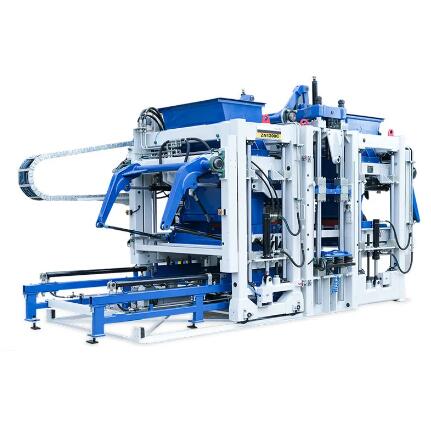How to Choose the Right Automatic Brick Making Machine for Your Construction Project
2024-08-16
Investing in an automatic brick making machine can be a game-changer for construction businesses, enabling them to produce high-quality bricks efficiently and cost-effectively. However, with so many options available on the market, choosing the right machine can be challenging. In this blog, we’ll guide you through the key factors to consider when selecting an automatic brick making machine to ensure it meets your specific needs.
1. Understand Your Production Requirements
Before purchasing an automatic brick making machine, it’s essential to understand your production needs. Consider the following:
- Production Capacity: Determine how many bricks you need to produce per day. Machines vary in capacity, with some capable of producing a few thousand bricks per day, while others can produce tens of thousands.
- Brick Type: Consider the types of bricks you need to produce. Some machines are versatile and can produce different types of bricks, such as solid, hollow, interlocking, and paving bricks. Ensure the machine you choose can meet your specific requirements.
- Raw Materials: Identify the materials you plan to use, such as cement, sand, fly ash, or concrete. Different machines may be optimized for specific materials, so it’s important to select one that works with the materials you have available.
2. Evaluate Automation Features
The level of automation is a crucial factor when choosing a brick making machine. More advanced machines offer higher levels of automation, reducing the need for manual labor and increasing production efficiency:
- Fully Automatic: These machines handle every aspect of brick production, from material feeding to brick ejection and stacking. They require minimal human intervention, making them ideal for large-scale production.
- Semi-Automatic: These machines automate some processes but may require manual input for others, such as material mixing or brick stacking. They are suitable for medium-sized production needs and offer a balance between cost and automation.
- Manual: While not fully automatic, manual machines still provide some level of mechanization, often at a lower cost. They are best for small-scale production or when budget constraints are a concern.
3. Consider Machine Size and Installation Requirements
The size of the machine and the space required for installation are important considerations:
- Footprint: Ensure you have enough space in your facility to accommodate the machine, including areas for material storage, curing, and finished product stacking.
- Portability: Some machines are portable, allowing them to be moved easily to different job sites. This is particularly useful for projects in remote areas where transporting bricks could be costly or impractical.
- Installation: Consider whether the machine requires a complex installation process. Some machines may require a concrete foundation or other infrastructure, while others can be set up more easily.
4. Assess Quality and Durability
The quality and durability of the machine will affect its performance and longevity:
- Build Quality: Look for machines made from high-quality materials, such as steel, that can withstand heavy use and harsh conditions.
- Brand Reputation: Research the manufacturer’s reputation. Established brands often offer better customer support, warranties, and spare parts availability.
- Maintenance Requirements: Consider the ease of maintenance and availability of spare parts. A machine that is easy to maintain will reduce downtime and extend its lifespan.
5. Budget Considerations
Your budget will play a significant role in determining which automatic brick making machine is right for you:
- Initial Cost: Fully automatic machines tend to be more expensive than semi-automatic or manual options. However, they often provide better long-term value due to higher production efficiency and lower labor costs.
- Operating Costs: Factor in the cost of electricity, raw materials, and maintenance. Some machines are more energy-efficient than others, which can lead to significant savings over time.
- Return on Investment (ROI): Consider how quickly the machine will pay for itself through increased production and reduced labor costs. Calculate the expected ROI to determine if the investment is financially viable.
Conclusion
Choosing the right automatic brick making machine requires careful consideration of your production needs, automation preferences, space, and budget. By evaluating these factors, you can select a machine that will enhance your production capabilities, reduce costs, and contribute to the success of your construction projects. Whether you’re a small business or a large construction firm, investing in the right equipment is key to achieving efficiency and profitability in brick manufacturing.



